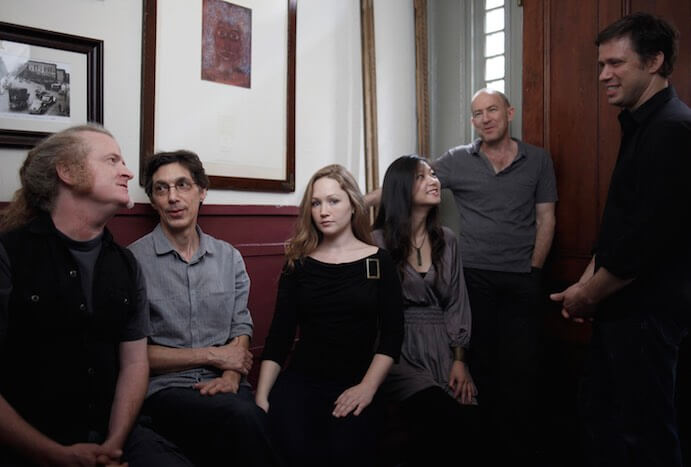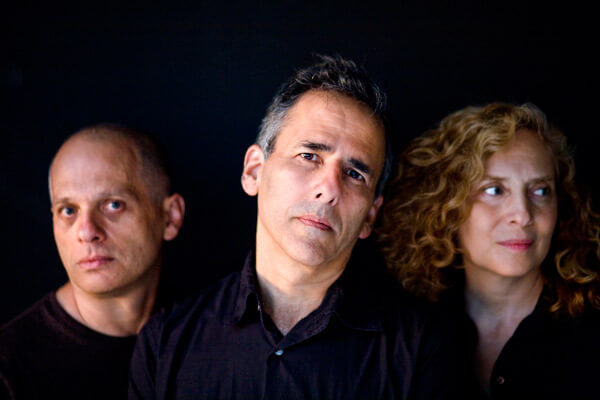 It is no exaggeration to say that something of a crisis has existed in classical music for several decades. The typical institutions (orchestras and opera houses) are still there, academia churns out a plethora of new composers and performers each year, and there are plenty of new sound possibilities being explored. But in a changing world, there is a real question of whether art music can keep up, become relevant to new audiences, embrace technological changes, and bridge musical and social divides. In this context, the 25 year existence of Bang on a Can has been an impressive artistic attempt at addressing these questions, and the Nov. 5th concert at Carnegie Hall’s Zankel Hall by its All-Star ensemble was a great opportunity to assess its strengths and weaknesses (as well as just enjoy).
It is no exaggeration to say that something of a crisis has existed in classical music for several decades. The typical institutions (orchestras and opera houses) are still there, academia churns out a plethora of new composers and performers each year, and there are plenty of new sound possibilities being explored. But in a changing world, there is a real question of whether art music can keep up, become relevant to new audiences, embrace technological changes, and bridge musical and social divides. In this context, the 25 year existence of Bang on a Can has been an impressive artistic attempt at addressing these questions, and the Nov. 5th concert at Carnegie Hall’s Zankel Hall by its All-Star ensemble was a great opportunity to assess its strengths and weaknesses (as well as just enjoy).

Bang on a Can All Stars–Photo by Pascal Perich
While this ensemble is likely familiar to many readers of this blog, a few words are in order about its abilities and unique sound. First off, each performer stands out in their own way for their style of playing and sounds achieved on their instrument. At this concert I was particularly impressed with Ashley Bathgate’s clarity of sound on the cello. Without using much vibrato for a cellist, she gives tremendous melodic shape to music that is often more about texture, and gives just as much clarity to highly accented rhythmic figures. Evan Ziporyn’s clarinet playing was likewise impressive for the way it was able to soar above yet blend into the ensemble at the same time, and his ability to “get ugly” when the music demanded so was equally important. The electric guitar, bass, percussion rig (which often featured drum set), and piano that complete the ensemble made for a whole different sound, functioning as a cohesive unit with individual flavors.
In bridging the gap between art music ensembles and rock bands, the sound achieved was largely successful. Nonetheless, Vicky Chow’s piano skills were for the most part buried by the ensemble (and having heard her perform before, I know she’s capable of really banging away on the piano in a way that’s highly percussive). This may have had to do with the fact that the piano was used largely as texture in the compositions, or the balance in the hall, or the meshing of acoustic frequencies. The bass, by contrast, was always audible even when its role was more in the background – the strength of the instrumentation is in some ways the different sonic frequencies and melodic vs. percussive sounds. The electric guitar and percussion at times drowned out the rest of the ensemble. Again, this was not necessarily anyone’s “fault,” but seems to be an ongoing issue with attempts at combining modern (especially electric) instruments with more traditional orchestral ones. Largely this was successful, but there were those moments when the other instruments just couldn’t compete with amplified guitar and percussion.
What was most impressive was the ensemble’s ability to function as a unit, perform difficult new music with precision, but at the same time have fun and bring it all to life. They were impressive yet inviting.
The audience responded well to this performance and seemed to recognize and appreciate the lesser degree of formality yet at the same time the high artistic quality. While a bit less straight-laced than the usual Carnegie crowd, it must be said that the audience was still drawn from the typical intellectual class, and in age tended to still be on the older end. It might be a hipper, more progressive crowd, but this nonetheless demonstrates the need for art music (including and especially the most cutting edge) to bridge social divides. This is of course a reflection of the kind of society we live in, but as musicians we need to find the ways to do our part, and creating a dialogue with the excluded will help our music reach new vistas.

David Lang, Michael Gordon, and Julia Wolfe – Photo by Peter Serling
Now about the compositions. The program itself was divided between Bang on a Can’s “house composers” and several new young composers, and in this respect helped give cohesion to the concert while making new blood a part of that process. Michael Gordon’s for Madeline took pitch slides in the strings and almost constant flutter-tonguing in the clarinet and used this as a new musical language. This was impressive in that it by no means came off as gimmicky, but as simply using these sounds as the musical language of the piece. David Lang’s sunray was an impressive highlight of the various strengths of the ensemble, going from clear sonic texture to percussive minimalism to a more rock style – a solid composition all the way through.
Louis Andriessen’s Life, performed along to a film made with the music, presented some interesting new ideas and sounds. A beautiful passage in the cello’s upper reaches played effortlessly sounded heavenly. The piece at times went from pretty to menacing in a seamless manner. It was impressive in the way it drew you in, with the music going to whole new places but forgetting how it got there – transitions like this are not an easy feat for composers. The “third movement” was a musical imitation of what happens when you run your hand up and down window blinds – a sort of scherzo of a new kind. This evocation of symphony form was a nice touch and aided the presentation of new ideas.
David Longstreth’s Instructional Video, Matt Damon, Breakfast at J&M was just as much a contrast of sounds as its title suggests. The opening guitar motif sounded like it could have been in a Beach Boys song. The subsequent dark sounds in the strings were brightened as the rest of the ensemble joined in, and the percussive use of bass clarinet gave a punch and energy to the piece.
Kate Moore describes Ridgeway as reflecting a search for identity. Its opening was an impressive natural development out of a two-note motif. From here the music developed into a percussive texture, making full use of the ensemble to create a menacing almost industrial sound. An impressive moment was a stretching melody from the cello within this texture. My only critique would be that at times individual parts were a bit buried in the wall of sound, and the acoustic imbalance didn’t help. The austere ending was an excellent contrast from the thickness preceding it.
Finally, Lukas Ligeti’s Glamour Girl made great use of the drum set, with changing grooves setting the tone for each section of the piece. The texture was created by interlocking rhythmic and melodic patterns, and one could hear different ideas emerging out of the same music by changing one’s focus. In this respect it was good to hear the composer drawing on concepts learned from African music while putting these concepts into his own musical language.
—
David Pearson is a saxophonist residing in NYC.



















